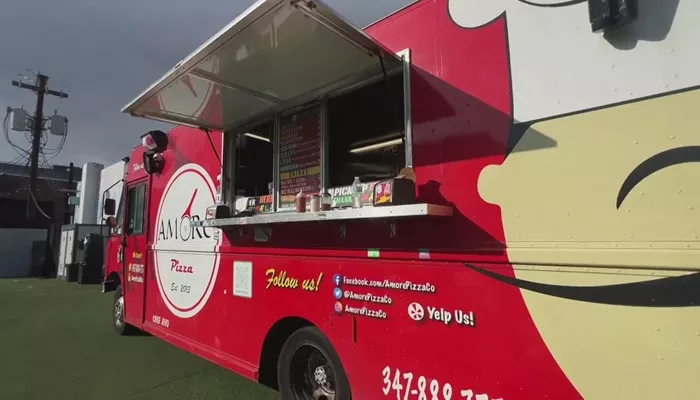A food truck in Denver has swapped its gas generator for an electric system, encouraging other food truck operators to follow suit. The initiative aims to help businesses reduce costs and become more eco-friendly.
The Regional Air Quality Council (RAQC) is offering a grant program designed to help food trucks transition to electric power. One food truck leading the way is Amore Pizza, which has been serving New York-style pizza in Denver for the past decade.
“I believe we have the best pizza in town,” said Jiho Tighrine, owner of Amore Pizza. “I’ll do whatever it takes to keep my customers happy,” including adopting a cleaner energy solution by replacing his old gas generator with an electric system.
While customers waiting in line for food may not think about the environmental impact, the effects are real. The noise, smell, and pollution from gas-powered food trucks contribute to air quality problems. According to the EPA, a food truck running on a gas generator for just eight hours can emit 165 pounds of carbon dioxide—equivalent to burning 83 pounds of coal.
Denver is known for having some of the most polluted air in the country. According to the American Lung Association’s “State of the Air Report,” Denver, Aurora, and Greeley rank as the sixth most polluted cities in the U.S.
David Sabados, a spokesperson for the RAQC, highlighted the environmental impact: “When you see a generator running, just think of 83 pounds of coal being burned right next to it.”
To address this issue, the RAQC launched the “Engines Off” program last year, offering grants to food trucks to help cover the costs of switching to electric power. The grants cover up to 80% of the cost, with a maximum of $20,000.
“We understand the upfront costs can be a concern, which is why we made the grants as substantial as possible,” Sabados said.
Tighrine shared his own experience, noting that he used to spend about $300 per month on gas for his generator. Since switching to electricity, his monthly bill has dropped to just $50. “It’s just like owning a Tesla,” he said. “You charge it up, and it lasts me at least 20 hours a day.” He believes this change has been a positive one for his business.
So far, the program has funded 30 food trucks, but the RAQC’s goal is to help 100 mobile businesses make the switch. Applications for the grant are still open and can be accessed online.
Sabados added, “This technology doesn’t just apply to food trucks. It could also be used at construction sites and other industries, helping to reduce pollution across the board.”

